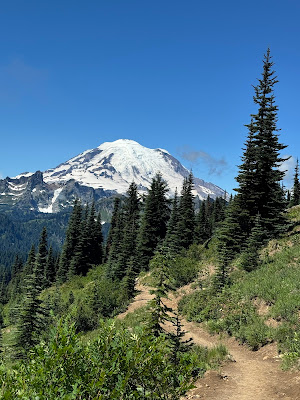Lisbon, Portugal, ca 2018
An unused oversized panorama tourist postcard with the number 177 at the upper left on the reverse, this card is a www.revelamos.com product. A blurb in three languages, Portuguese, English, and Spanish, is found along the bottom edge on the reverse. The English translation: “With a personality of all its own, Lisbon is a capital city that can boast over 800 years of history and a wide range of cultural influences that happily mingle with the most avant-garde trends. An amalgam of styles and an assortment of contrasts give it a special charisma reinforced by the waters of the Tagus.”
This is one of several cards shared by my son and daughter-in-law from a trip they took to Portugal and Spain in 2018. It shows the city of Lisbon’s harbor on the Tagus River. Lisbon’s port on the Tagus is the country’s third largest port. It is a natural harbor that opens to the Atlantic Ocean. The five most recognizable architectural landmarks of the city are identified with brief information.
Five landmarks in Lisbon marked
1. São Jorge Castle (Saint George’s Castle). There were earlier fortifications on this hilltop by Phoenicians, Carthaginians, Romans and Moors before the Portuguese conquest in the Siege of Lisbon, 1147. It has served as a royal palace, a military barracks, home of the Torre do Tombo National Archive, and now as a national monument and museum. Archaeologists have found human presence in the Tagus valley from the 8th century BC. In about 48 BC Lisbon was a Roman city with a fortification here.
2. The Church and Monastery of St. Vincent. Founded in 1147 the original Monastery of St. Vincent was built by the first Portuguese King, Afonso Henriques. It was named for the patron saint of Lisbon, Saint Vincent of Saragossa whose relics were brought to Lisbon in the 12th century. The church was built between 1582 and 1629 with other buildings in the complex completed in the 18th century. The earthquake of 1755 caused damage that required some reconstruction.
3. Church of Santa Engrácia was built in the 17th century as a church but has since been converted into the National Pantheon where important Portuguese personalities are buried.
4. Lisbon Cathedral, Cathedral of Saint Mary Major. This cathedral was built in 1147 and has survived many earthquakes and has been modified and restored several times. It was identified as a National Monument in 1910. Excavations have yielded remains from Roman time, traces of Visigoth buildings, and evidence of a former Moorish building related to a mosque that once occupied the site.
5. The Commerce Plaza or Praça co Comércio. Facing the Tagus harbor this complex has a large harbor facing plaza. After the 1755 earthquake the plaza was remodeled as part of the rebuilding of the downtown area of Lisbon. Beginning in the 19th century the plaza housed some of the most important Portuguese state departments.
For additional information, see:
https://en.wikipedia.org/wiki/Port_of_Lisbon
https://en.wikpedia.org/wiki/Tagus_Estuary_Natural_Reserve
https://en.wikipedia.org/wiki/Lisbon
https://en.wikipedia.org/wiki/Pra%C3%A7a_do_Com%C3%A9rcio
https://thenextcrossing.com/lisbons-architectural-history
https://en.wikipedia.org/wiki/S%C3%A3o_Jorge_Castle
https://en.wikipedia.org/wiki/Monastery_of_S%C3%A3o_Vicente_de_Fora
https://en.wikipedia.org/wiki/Church_of_Santa_Engr%C3%A1cia
https://en.wikipedia.org/wiki/Lisbon_Cathedral























